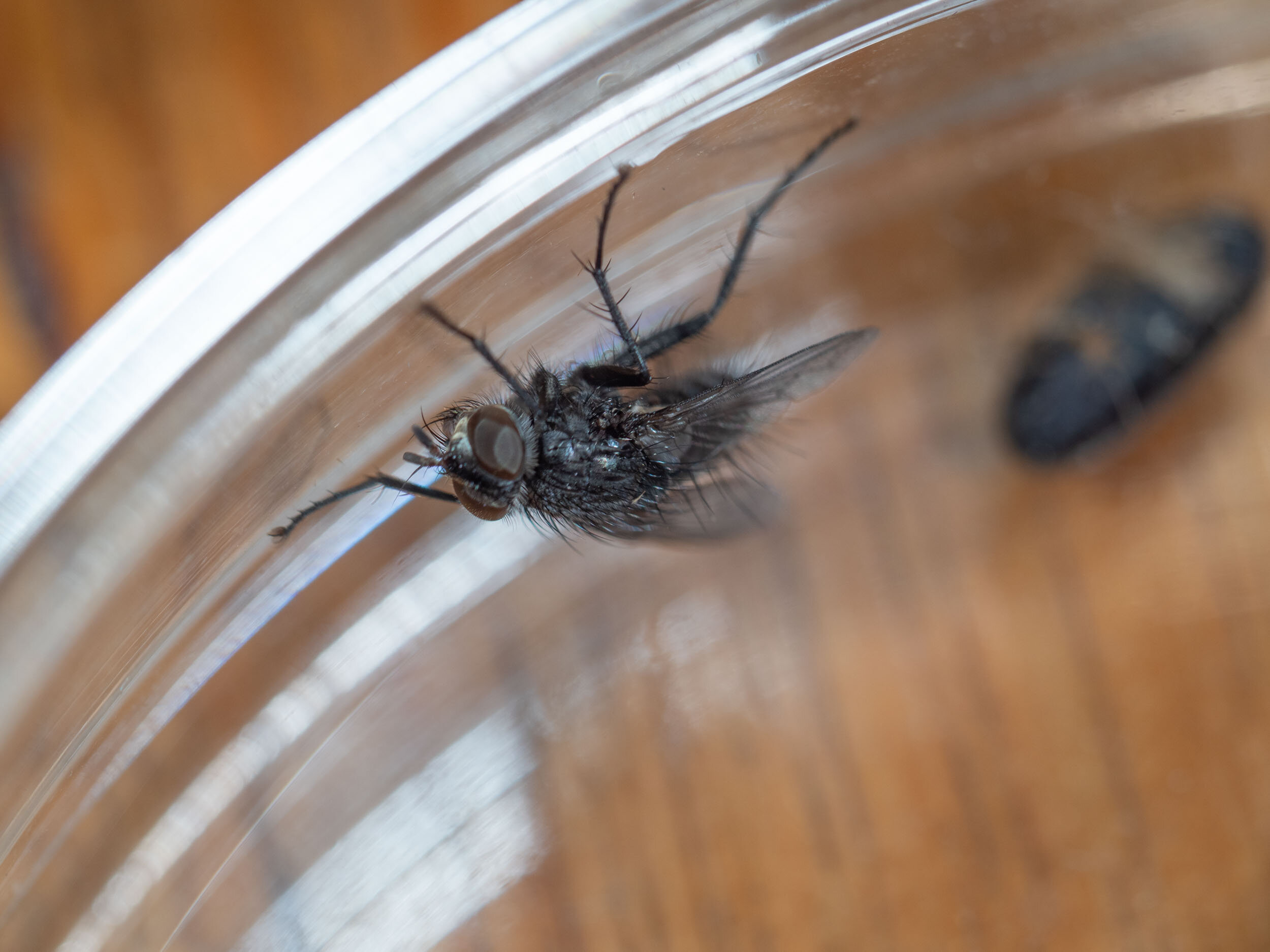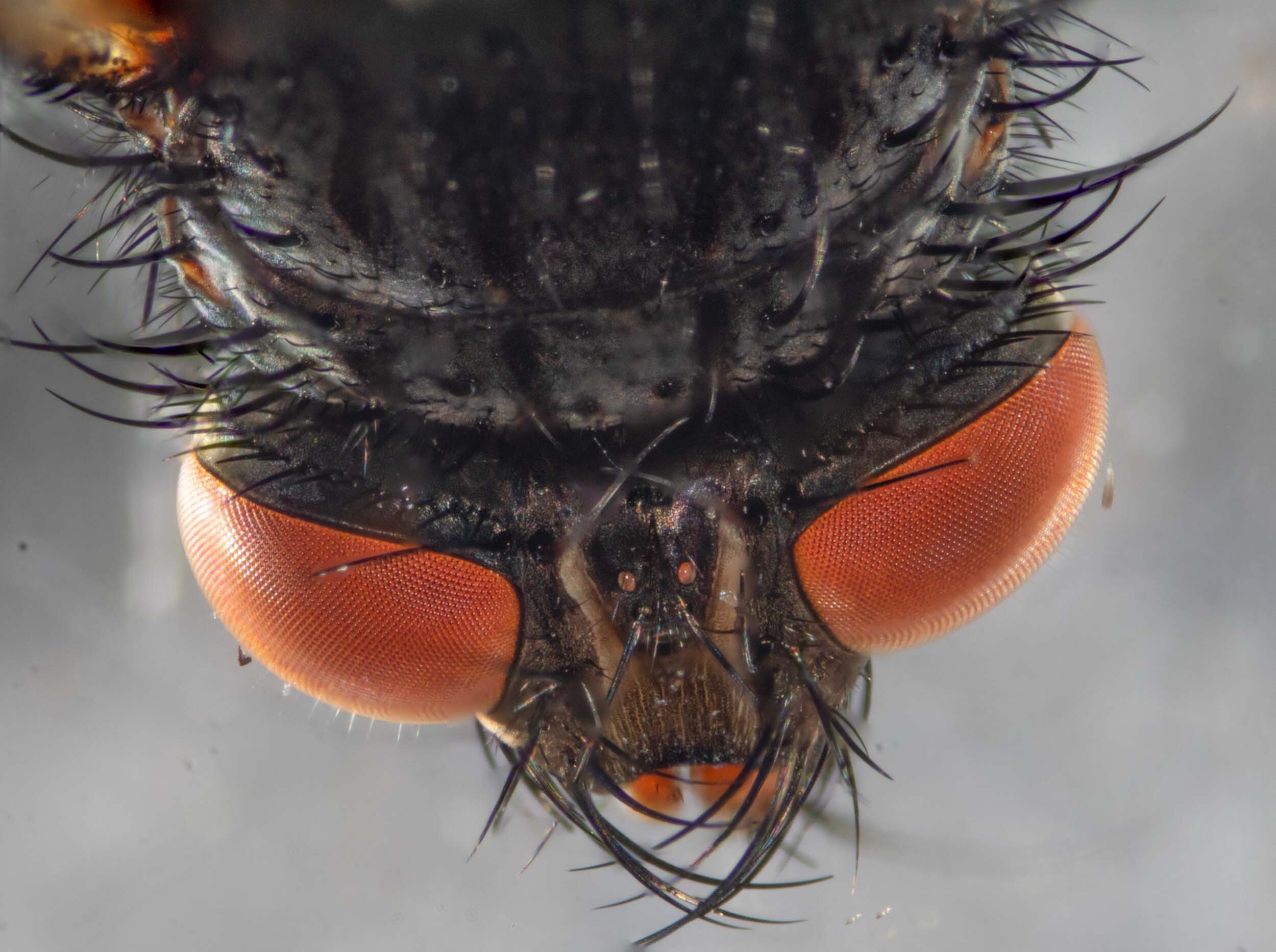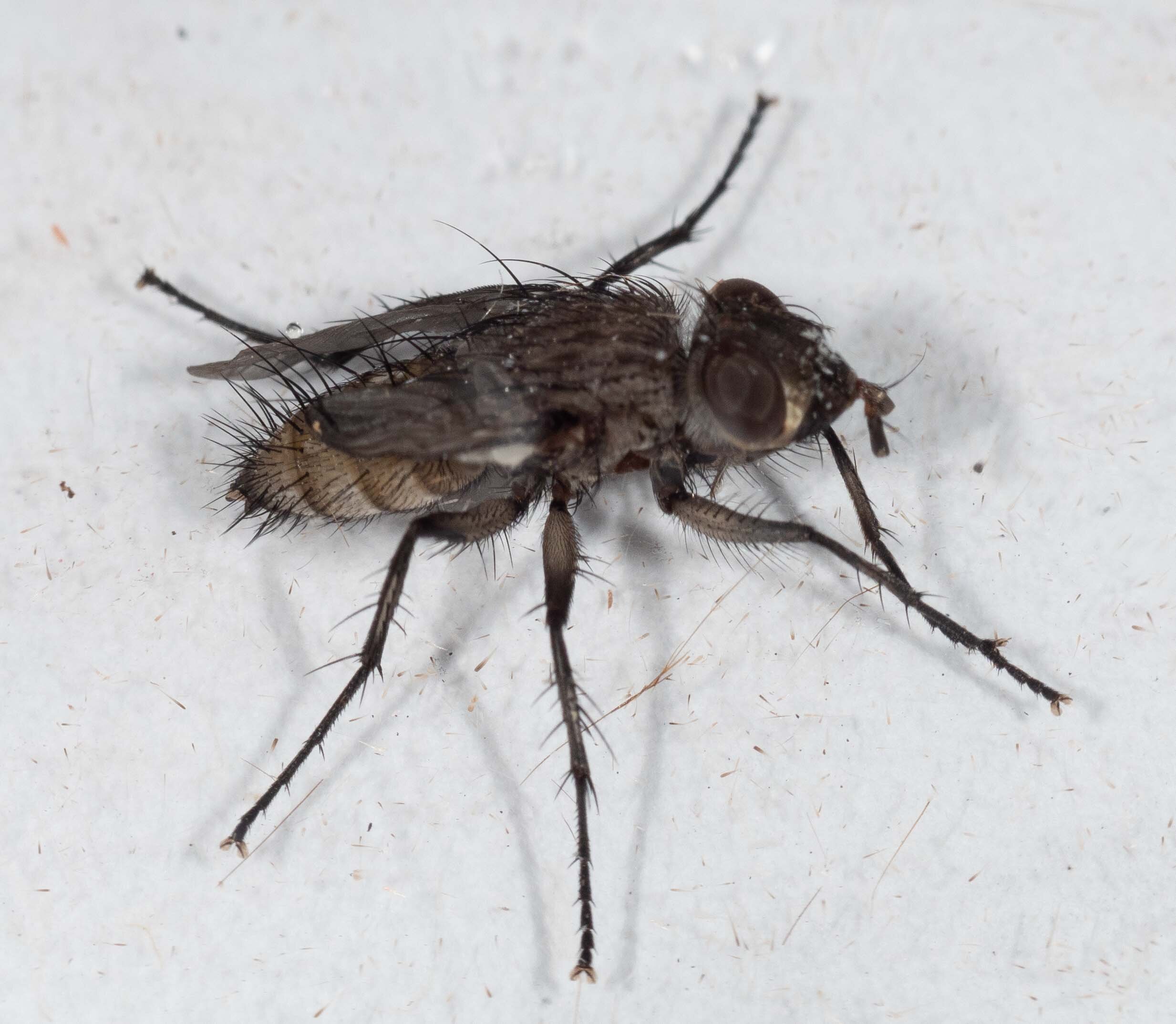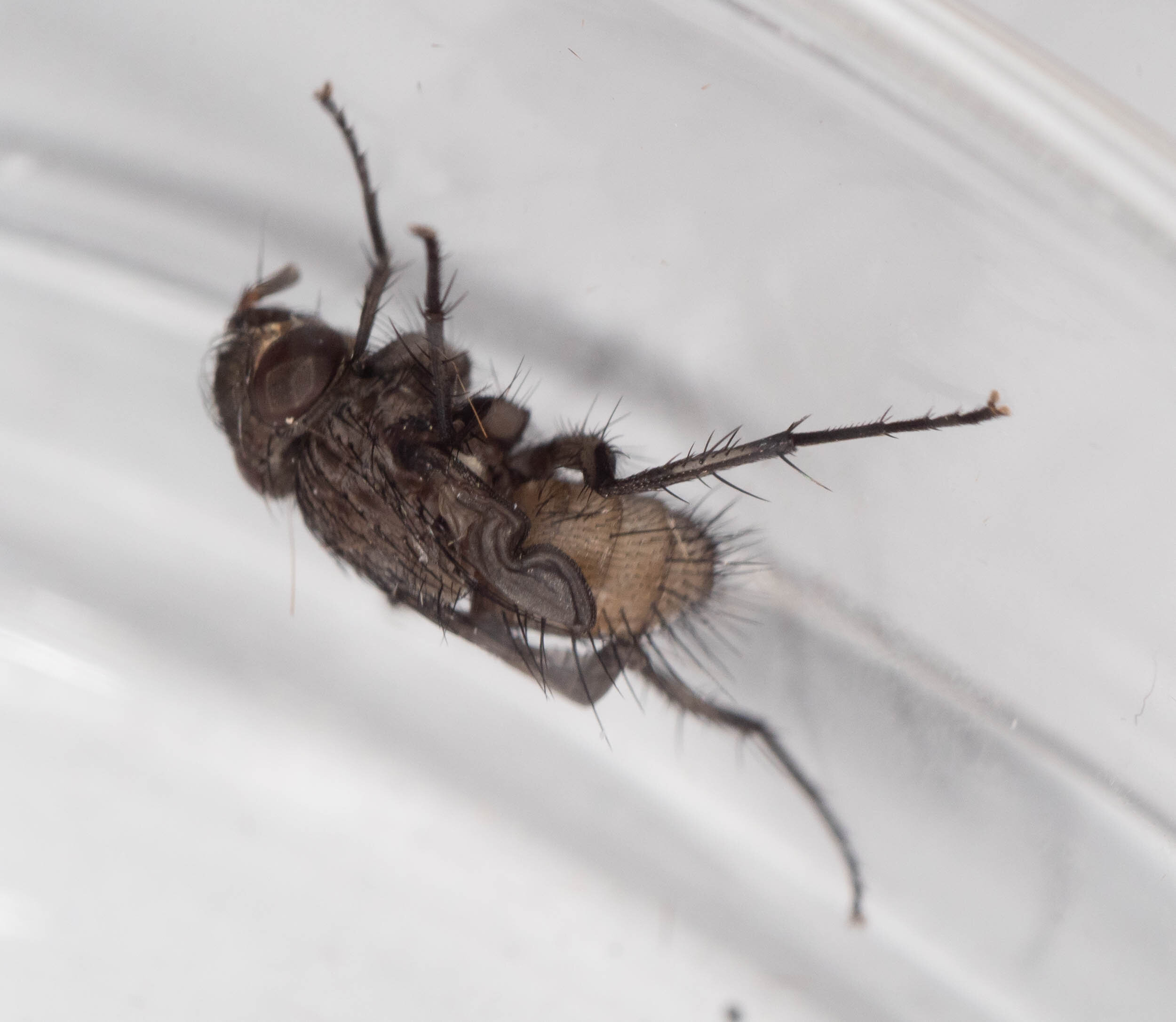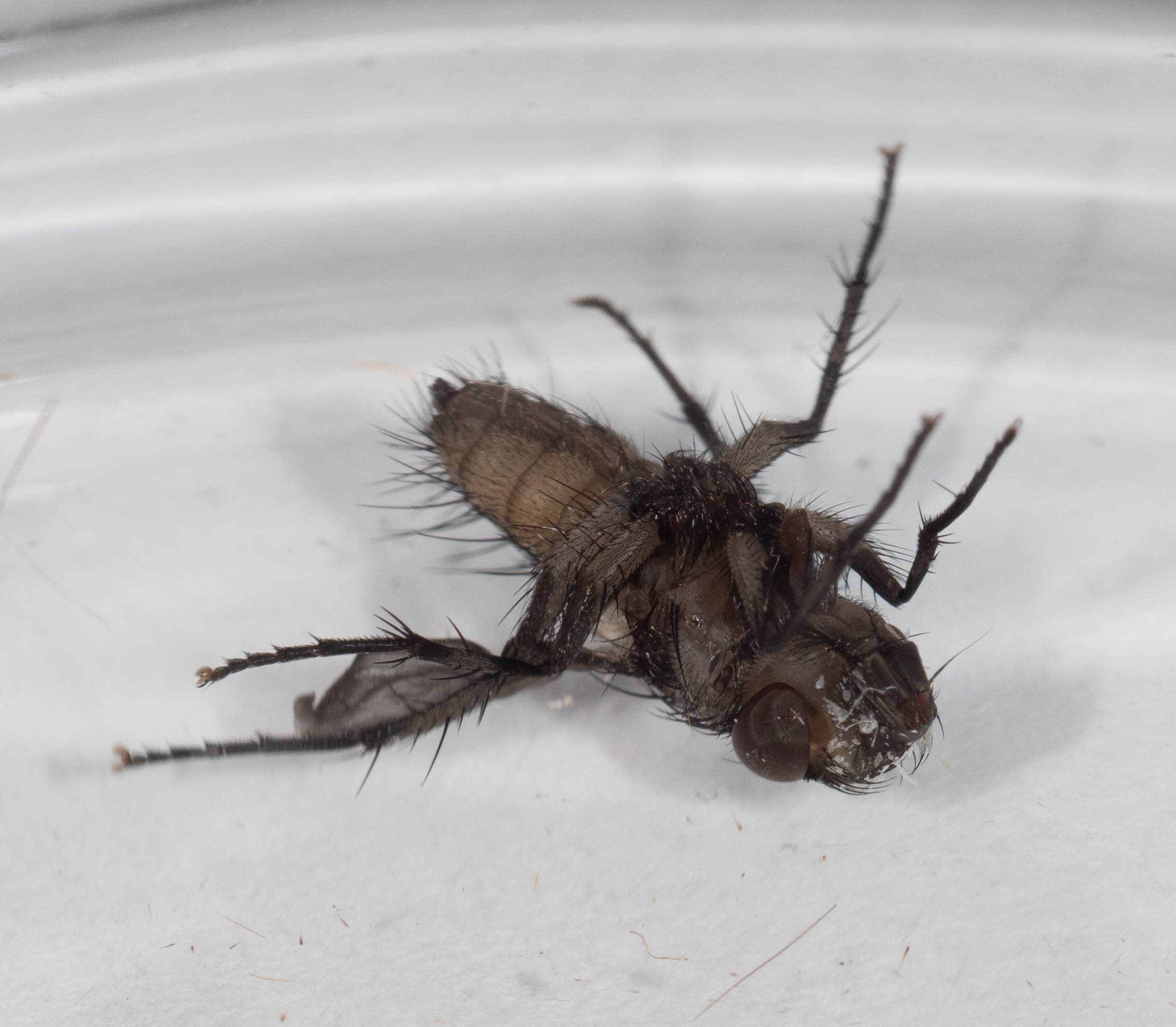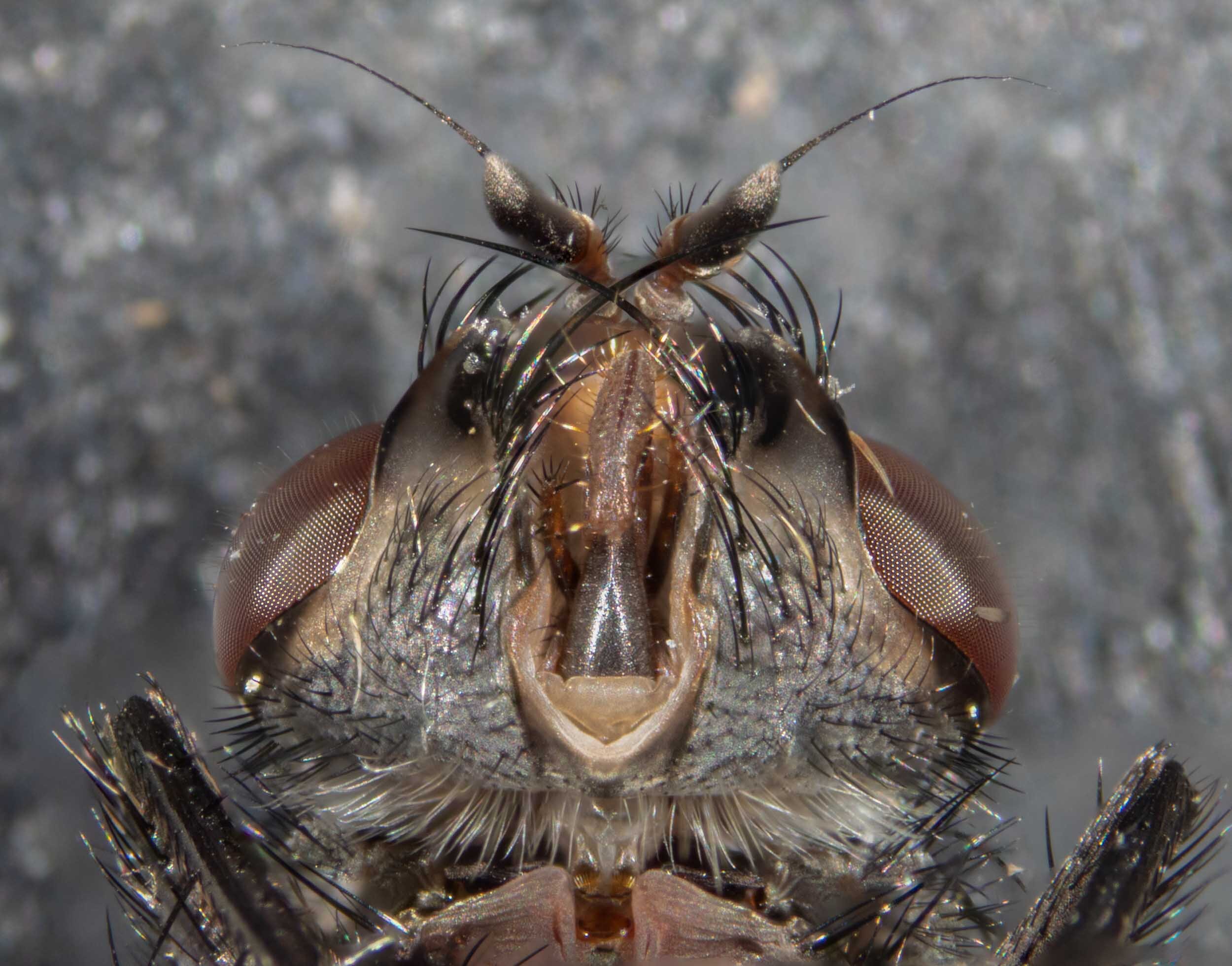Tachinid flies in anthelid caterpillar (Oct 2020 - July 2021)
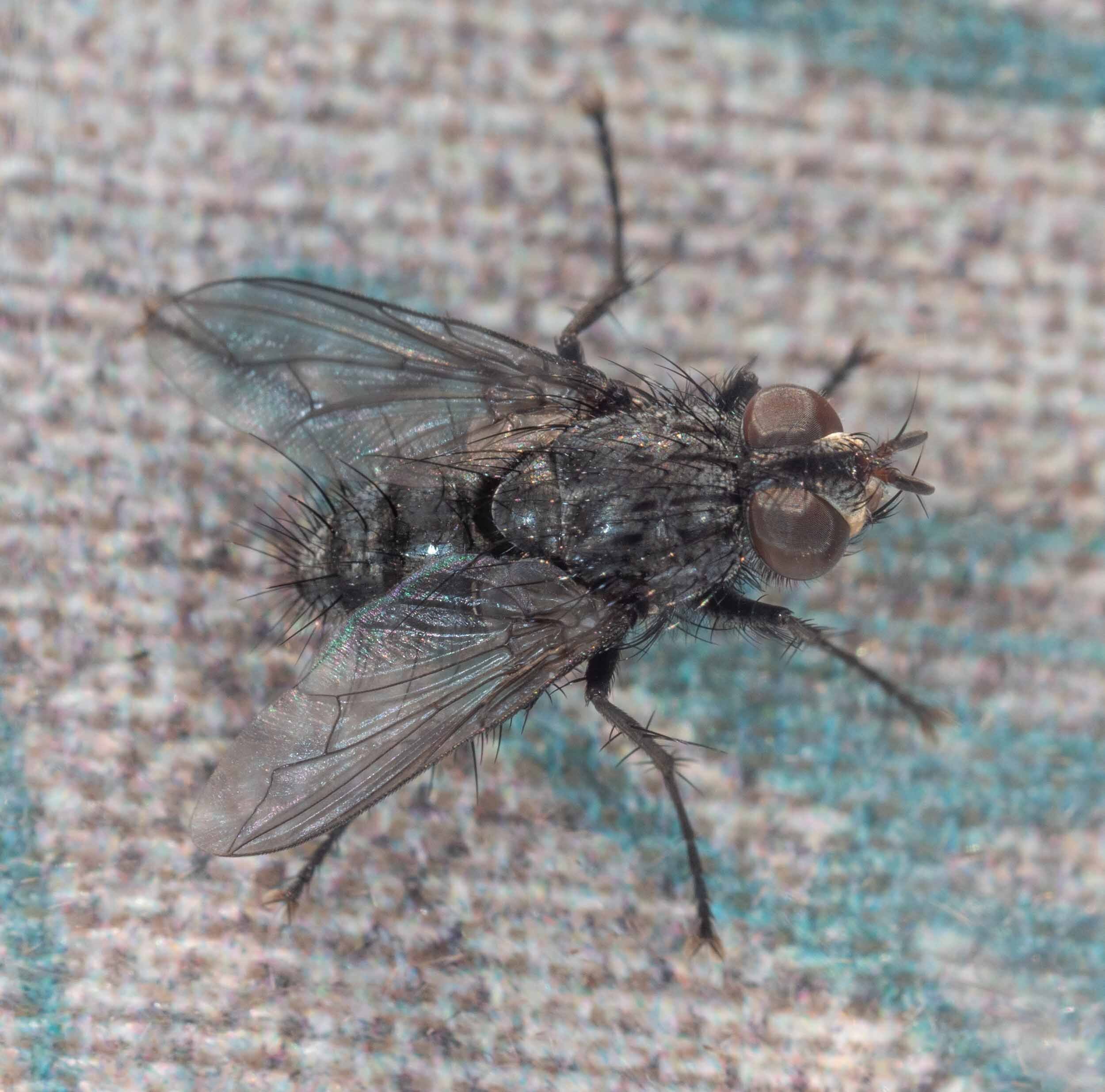
Workbook
Tachinid flies emerged from caterpillar after 7 months as pupae
24/10/2020: caterpillar found feeding on Amperia
6/11/2020: still feeding well on Amperia
18/11/2020: very fat, lying on floor, starting to spin silk cocoon
19/11/2020: no cocoon, and now appears to be dead
~22/11/2020: 2 pale maggots emerged and pupated
27/11/2020: the dead host is no longer stinking so I dissected it and found a total of 10 pupae (8 inside the body of the caterpillar, which was otherwise entirely empty)
The 10 pupae were kept in a petri dish.
7/7/2021: 1 fly eclosed. Imaged live, then into freezer for several hours, then into 100% ethanol and stored at 4 degrees C
tessovar images of terminalia and vertical setae
9/7/2021: second fly emerged. Killed (in freezer) before imaging. Stored in 100% ethanol at 4 degrees C.
10/7/21: 3rd and 4th flies emerged … frozen then 100% ethanol
fly #3 photographed under Tessovar - appears to be male and lacks outer vertical seta
fly #4 photographed under Tessovar to establish sex and whether or not external outer vertical setae is present.
11/7/21: 5th fly emerged … frozen then 100% ethanol. Imaged under tessovar. Looks to be a female. body length 7mm
13/7/21: 6th fly emerged …photographed (P7130004-0009), then frozen then 100% ethanol
14/7/21: 7th fly emerged… frozen then 100% ethanol. Following images of terminalia and head setae taken with tessovar. Appears to be female and has an outer vertical seta.
18/7/21: 8th fly emerged… frozen then 100% ethanol
Has an outer vertical seta and has a female terminalia.
23/7/21: 9th fly emerged …photographed alive (P7230010-2 to P7230050)
Tessovar images of fly no. 9 - looks like a male
27/7/21: 10th (and last) fly emerged…photographed alive (P7270001-P7270012) is this a female? It has an outer vertical seta.
following Tessovar images are of this fly. I used Crosskey 1973 to key it out to subfamily Goniinae (Exoristinae), tribe Sturmiini.
Subfamily features include: rows of frontal setae descending to about on a level with the middle of the second antennal segment; reclinate orbital setae present; inner vertical setae just crossing towards top; vibrissae well developed; arista micropubescent; palpi fully developed; prosternum setulose; prosternal membrane bare; humeral callus with 4 setae; pre-alar seta present; postalar callus with 2 setae; at least 2+2 dc setae (3+4 present); 3 postalar setae; scutellum with 3 pairs of marginal setae (not including apical seta); fore coxa bare on much of its inner anterior surface; hind coxa bare posterodorsally; hind tibia with two dorsal preapical setae; hair of lower half of the occiput pale.
Tribe features include: vibrissae inserted above epistomal margin; 3+4 dorsocentral setae on prescutum and scutum; inner posterior angle of lower calypter well developed with inner margin abutte closely against the scutellum. Feature that doesn’t match is small pre-alar seta, although in Crosskey’s key some members of this tribe show this feature.
#10 has an external vertical seta which is a feature of the female Blepharella, but is absent in the male. All of the males from this collection lack this seta.
Keying out to genus:
Wing cell R5 normal, distinctly open at the wing margin
Wing hyaline (not distinctly bicolorous). Interfrontal area not exceptionally narrow, subequal in width to parafrontal area. Apical seta strong and horizontal but weaker than sub-apical seta.
Eyes bare (a few very minute hairs only visible under microscope).
13. Parafacials bare. Ocellar setae proclinate. Lateral scutellar setae present. Parafrontals without strong setae (apart from the frontal setae). Male without outer vertical setae but females possess this seta.
14. Lateral scutellar setae present. Upper halves of parafacials without hairing. 4 sternopleural setae. Male abdomen doesn’t show obvious modification of hairs of venter.
17. Prosternum bare. Facial ridges with strong downcurved setae on more than half their height. ––––> Blepharella
There is one species in this genus Blepharella lateralis. There are records for this species in FNQ and northern NSW. It is a non-endemic, being widespread through the Oriental region, PNG and Solomon Islands.
This species is listed in the invasive species compendium . It is listed as attacking larvae of Euproctis lunata, Mythimna, Penicillaria jocosatrix, Spilarctia obliqua, Spodoptera littoralis. None of these species are Australian natives. So given the fly is listed as non-endemic, it is unlikely to be an environmental problem here.
There is a listing in gbif.org
Images of the holotype are shown here.
Update 6/8/21
hinterrandmacrochaetenquerreihe, a curator on iNaturalist, commented on my ID of this species, pointing out that the eyes are densely haired, not bare, prosternum is not bare and the facial ridges do not have setae on more than half their height. This rules out my tribe ID of Sturmiini.
He suggested Chlorotachina as a likely possibility. This genus is in the tribe Ernestiini in subfamily Tachininae.
Tachininae is the alternative to Goniinae in the last couplet of the subfamily key. Features are:
Prosternum bare (haired in a few exceptions which don’t appear to match my species). This doesn’t fit.
Pteropleural setae present or absent.
Epistome often strongly projecting and easily visible in profile, the vibrissae then often high above level of epistomal margin. This also doesn’t fit.
So the characters of my species don’t appear to put it into Tachininae. However Crosskey states that it is almost impossible to separate Tachininae from Goniinae with small pre-alar seta (which my species has) in a satisfactory way. He states that specimens should be run in the tribal keys for these two subfamilies in these cases.
Key to tribe Ernistiini has following steps.
Ocelli present. Prosternal region normal, no sign of inflation. Male head not holoptic. Facets not obviously enlarged.
Epistomal region of the head prominent, visible in profile projecting in front of vibrissae, which are inserted well above the epistomal margin. Abdominal sternites partially exposed between ventral ends of tergites. Scutellum with 3 or more pairs of marginal setae, including a strongly crossed apical pair. Humeral callus with four or more setae.
Hind coxa bare on posterodorsal surface. Eyes haired. Parafacials bare or haired. Three or four post dc setae.
Hind tibia with a pv apical seta. Three post ia setae. Postabdomen of male with tergites 6 and 7+8 not externally visible or only just visible when hypopygium in situ. Scutellum with four or more pairs of marginal setae. Bend of vein M usually with a trace of M2 appendix or fold. Mid tibia of both sexes with a submedian v seta. Parafacials bare or haired.
Palpi moderately or full developed. Parafacials bare. Eyes bare or haired. Three or four post dc setae.
All of these characters fit, except the epistomal region is not prominent in my species.
Key to genera in tribe Ernestiini
Eyes densely haired. Presutural astrostichal setae well developed. Prosternum haired. Wings clear hyaline.
Upper half of face slightly swollen medially but not raised into a keel, faced therefore almost completely invisible in profile.
Abdomen entirely shining, if some whitish pollinosity present then rather evenly distributed and very inconspicuous. Thoracic dorsum distinctly shining.
Malloch’s 1929 original description and drawing of Chlorotachina nigrocaerulea matches my fly pretty closely. Differences include:
base of third wing vein with 8 short, closely spaced fine setulae above and below. There are only 3 in my fly and these are only on the upper side of the wing.
mid tibia with a ventral bristle. Several bristles are present on the ventral mid tibia in my fly.
4+4 acrostichals. My fly has 3+3.
my flies are around 7mm long rather than the reported 13mm.
Figs. 22, 23 from Malloch (1929)
(Host caterpillar identified as Pterolocera leucocera based on an identical caterpillars collected 3/9/2020 and raised to adults in March 2021 … see iNaturalist records for male caterpillar and moth; and flightless female caterpillar and moth)
This is a workbook page … a part of our website where we record the observations and references used in making species identifications. The notes will not necessarily be complete. They are a record for our own use, but we are happy to share this information with others.








